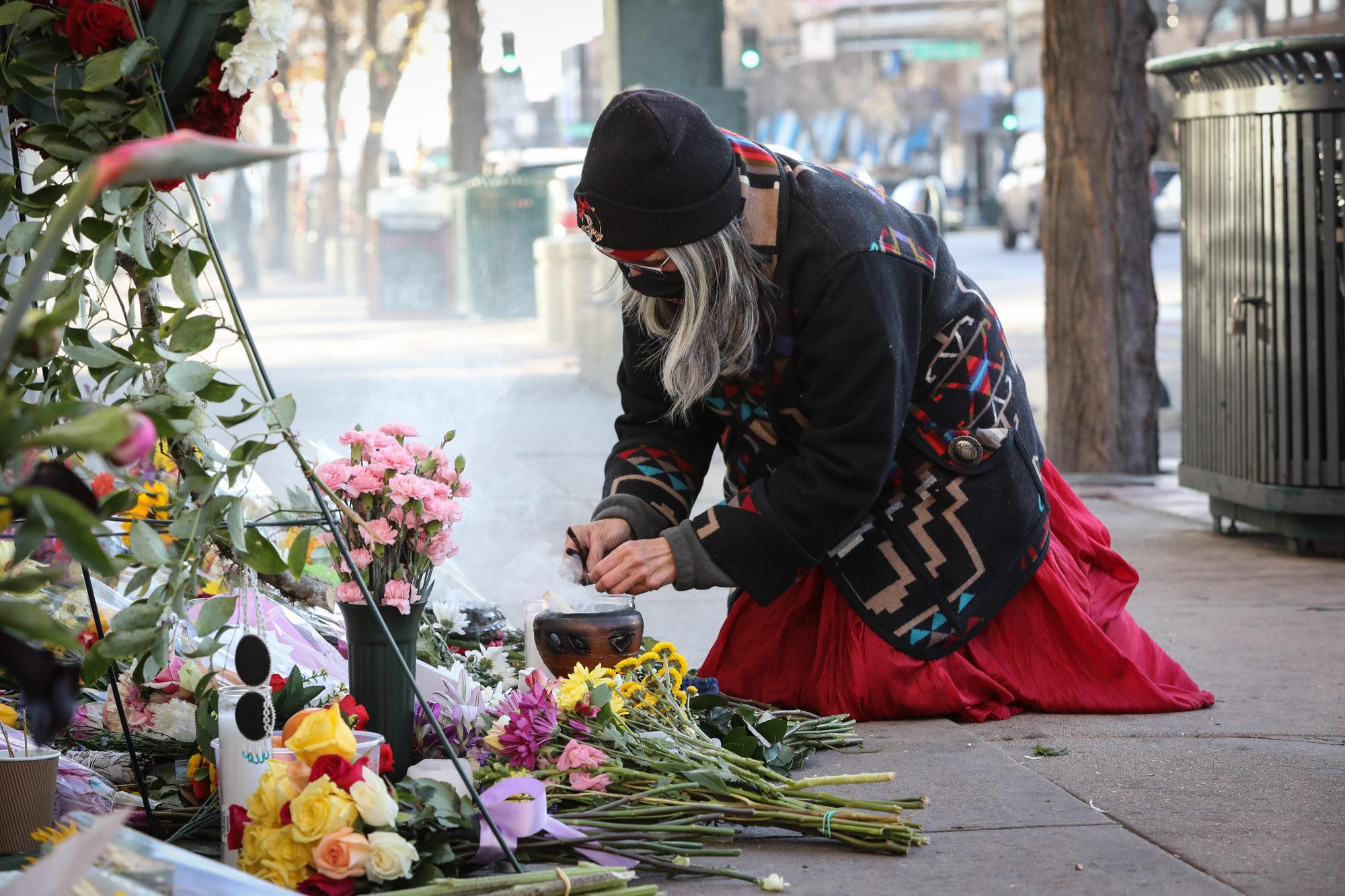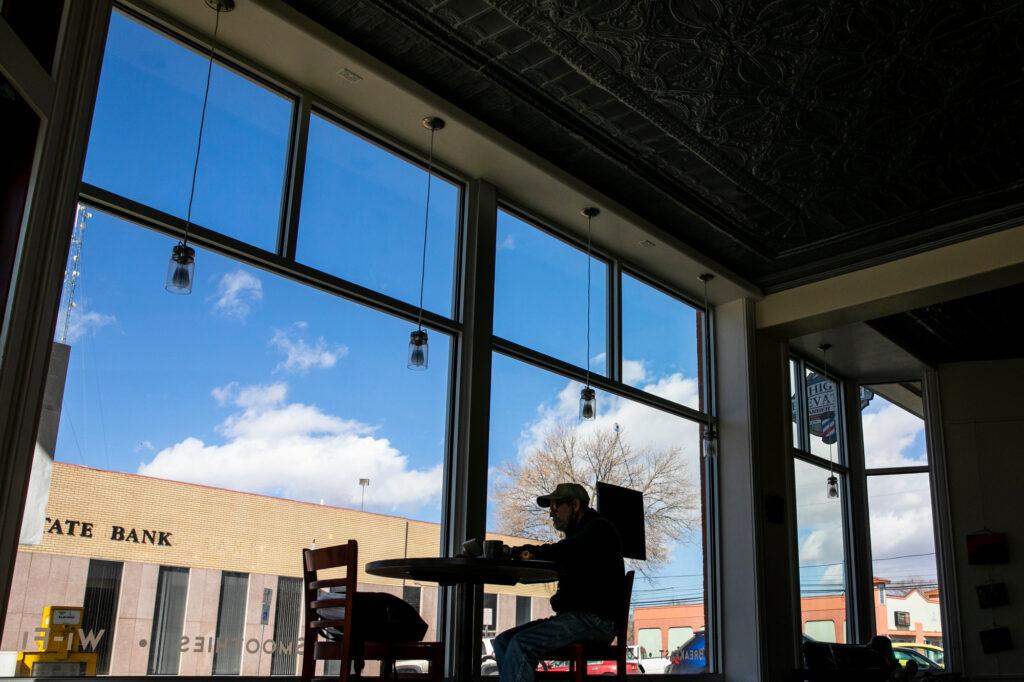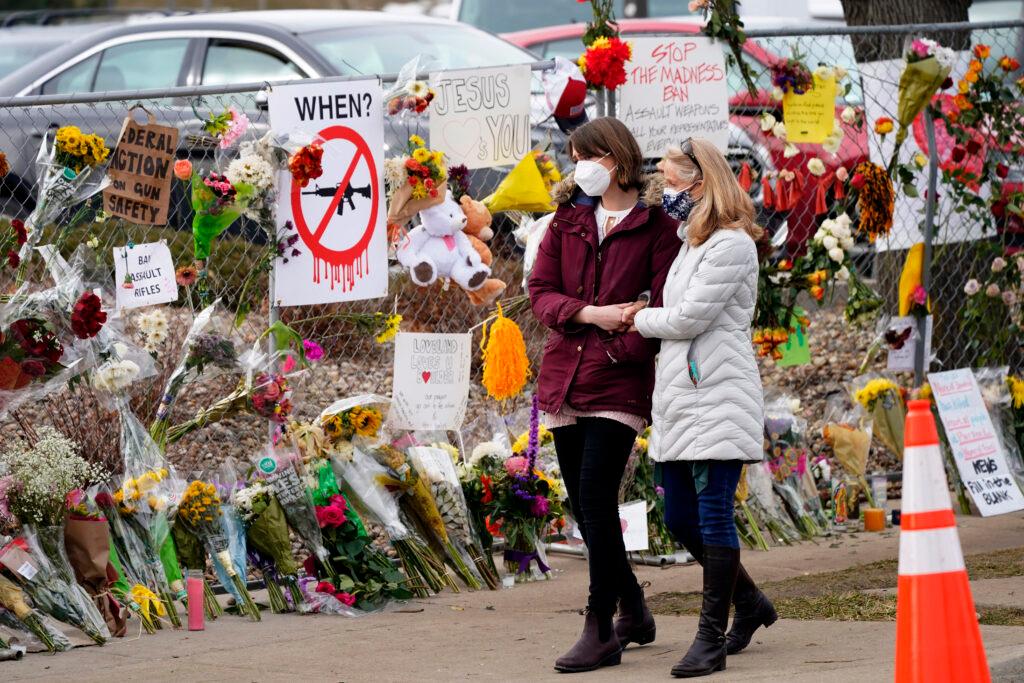
Editor's Note: This story contains mentions of suicide and descriptions of violence.
The young man carried knives, a Taser and pepper spray every day to his job at a gun store in southern Colorado. And during his shifts — as he handled firearms — he allegedly liked to talk about one particular topic: school shootings.
He had dropped out of a local high school, he allegedly told a coworker, “because (he) planned on shooting up the school,” adding that “he could hurt people.”
Those are the reported details that led the teenager’s coworker, after weeks of worrying, to call a federal firearms tipline, according to court records. And it soon became the basis for the local police department’s first and only “red flag” case, a rare use of the law in rural Colorado.
It’s also one of dozens of cases statewide where police have used the law to intervene in feared cases of mass violence. The law, which went into effect just three years ago, allows judges to ban someone from having guns if they’re believed to be a threat to themselves or others.
A review by CPR News found that, among the nearly 400 cases filed under the law so far, more than a dozen respondents had allegedly talked about carrying out mass shootings in places like grocery stores, theaters and neighborhoods, with various levels of planning. More than a dozen others talked about a “suicide by cop” or otherwise ambushing police officers, and one had threatened to assassinate political leaders.
In most cases, the person was reported to own multiple guns — as many as 31 firearms in one instance.
One man in Denver allegedly donned a bulletproof vest and demanded that his friends give him back his guns, saying he “wanted to go hurt people.” Another reportedly said he would kill his ex-wife and then “unload as many rounds as possible” in a fight with police.
In metro Denver, a law enforcement officer allegedly told coworkers he would take his AR-15 and ambush his lieutenant before forcing other deputies to kill him. “You’ll never forgive me for what I would do,” he told them.
| If you or someone you know is in crisis or looking for mental health services, call the Colorado Crisis Services hotline at 1-844-493-8255, or text “TALK” to 38255. |
In Boulder County, a young man allegedly showed off a new gun and threatened to “kill everyone” — while referencing the fatal attack on a nearby grocery store that had played out just weeks earlier.
In Colorado Springs, just months before the Club Q attack, a man in his twenties reportedly told mental health professionals about his plans to carry out an attack on a gay bar, or on the Territory Days festival, only to be deterred by the large police presence there. Most of the cases — with some notable exceptions — resulted in a “red flag” order from a judge.
But it’s impossible to say whether the law directly prevented any acts of mass violence. CPR News’ review of news sources and state criminal court records found no evidence that any of the respondents later carried out their alleged threats. Only a few of the respondents in these cases had any subsequent criminal record, including a Weld County man who was later accused of trying to kidnap a young girl. Red flag orders are a civil process, and CPR News is not naming the respondents.
'A lot of these threats are out in the open'
The southern Colorado case was set off by a confidential tipster, according to an affidavit filed by a police officer.
The teenage respondent had “talked a lot about school shootings, dropped out of school because he would shoot it up, and understood why people shot people, because he could hurt people,” wrote the officer assigned to the case.
The young man had recently bought a Ruger 22LR rifle from the store where he worked, and faced “numerous” reports for incidents in local schools, the detective wrote. He had been viciously bullied, according to his coworker.
“I don’t see why I won’t shoot up a school,” he allegedly told the coworker, who added that the young man had rapid mood swings.
The coworker went to the gun store’s management, saying that the young man was talking about school shootings and “shouldn’t be selling or around firearms,” but was told to “just ignore it,” according to the police report. A representative for the gun store chain did not respond to a request for comment.
It would have taken just ten seconds for the young man to unlock a gun at the store, load and fire it, said the coworker, who feared he could become a target.
Immediately after police filed a red flag petition, a judge ordered the respondent to give up any guns, and days later a police officer with a search warrant seized a .22 caliber “U.S. Survival” rifle and a black scope from the teenager’s room. Soon after, the judge extended the ban for a full year.
| Do you want to share your experience with Colorado’s ERPO law? Email the reporter, Andrew Kenney, at [email protected] and let us know if you would like to remain anonymous. |
An attorney for the young man did not respond to a request for comment, nor did the police department. His mother could not be reached for comment. State criminal records show no further police interactions with him.
The red flag order was allowed to lapse late in 2022, a year after it was implemented.
These kinds of cases show how the “red flag” process can allow ordinary people to do something about the disturbing behavior of others, said April Zeoli, associate professor at the Institute for Firearm Injury Prevention at the University of Michigan.
She recently published a study of red flag petitions across six states, including Colorado. Her team read more than 6,500 court files in all, and found that more than 10 percent of the cases referred to potential mass shootings, including numerous threats to schools. Those numbers align with CPR News' findings in Colorado.
To Zeoli, the court files show that acts of mass violence “absolutely don’t come out of nowhere,” she said. “There are often warning signs that other people do perceive, and that allows us to intervene with extreme risk protection orders or in other ways as well.”
Critics of red flag laws argue that courts can already deal with dangerous situations through criminal charges or mental health treatment orders. Sen. Byron Pelton, a Republican from Sterling, said the rural mental health crisis should be addressed “before blaming a tool like a gun.”
When someone makes an alarming statement, Pelton said, rural sheriffs often can work out a solution voluntarily.
“In rural communities, usually there's lots of discussion,” he said. “Go out and talk to somebody.”
There are state and federal criminal laws against making certain kinds of threats, but they generally focus on threats to specific other people and threats that have immediate consequences, such as causing an evacuation. Advocates say the red flag law catches cases that fall through the cracks and addresses them more quickly.

Failed cases: 'I was surprised'
The process doesn’t always go so smoothly for the authorities as it did in the southern Colorado case. In some instances, court documents reveal that police struggle to prove their cases before judges.
That was the case for a 21-year-old man who had recently been hired as a security guard elsewhere in southern Colorado. On a phone call, he allegedly told a coworker that he fantasized about using his new work-issued firearm to commit a mass shooting, and that he’d “like to go to an elementary school to shoot young children and watch the kids run around like groundhogs,” according to court records.
He was “dead serious,” and thinks about carrying out a mass shooting “all the time,” he reportedly told his coworker. Their employer told police about the threat. When a police officer approached the man, he "initially said he was kidding" but "didn't further protest." The officer then ordered a mandatory 72-hour mental health assessment of the man.
During the evaluation, the respondent talked about having “thoughts in the past related to being bullied,” according to a judge’s order in the case. He was “happy to be at the facility because he wanted help to make the thoughts go away,” but he was released after a three-day evaluation, court records stated.
Judge Roberto Silva temporarily barred the man from having guns for two weeks — but ultimately refused to grant the full year-long order.
There was “no evidence presented” of a credible threat of violence and no previous pattern of violence, threats, or substance abuse, the judge found. Silva found that while the man did own a gun, it was required for his work. And Silva presumed that the young man had been released from a mental health facility because staff “not determined (the young man) to be mentally ill or deemed to be dangerous.”
The judge refused to order the release of the respondent’s mental health records, though police argued the records would have provided critical evidence in the case.
Jeff Edelman, the respondent’s attorney, said in an interview that he did not expect to win the case.
“I was surprised as hell. I thought this was the mother of all reasons why we have this law,” said Edelman, who was assigned to the case because the law requires counsel be provided for all respondents.
“I didn’t tell the judge that. I kept my mouth shut, because that wasn’t my responsibility. But morally, I’m telling you, I don’t want crazies out there shooting up places and hurting kids and people.”
He suspected that he had succeeded by arguing that the court had taken too long to consider the case, although Judge Silva did not cite that cause in his order.
State law says there must be “clear and convincing” evidence of a “significant” threat for a judge to issue a year-long order. The police department appealed the ruling, arguing that the judge should have considered mental health records as evidence. The appeal was denied.
More than a year later, court records show the respondent’s state criminal record remains clean.
The case is one of two ERPO petitions filed by Pueblo police. The other involved an armed woman reportedly making threats to herself, others and law enforcement. That order was granted by Judge Silva after the woman voluntarily agreed to it, court records show.
Looking for compromise
In some cases, the authorities have come to a compromise in instances where they feared mass violence. In Lafayette, an 18-year-old texted his mother a photograph of an AR-style pistol with a sight and a loaded magazine in the trunk of his car.
With a reference to the King Soopers attack that had happened just a month prior, he allegedly said: “My conscience was already on shaky ground … F*** it! Here you go: I’m going to take this gun and kill everyone.”
The mother appears to have contacted police soon after, and the case proceeded quickly. In a petition before the court, a Lafayette police officer noted that the young man had also reportedly made suicidal comments several months earlier, saying that he only stopped because the gun store was closed.
Judge Nancy Salomone soon granted a two-week ban. Meanwhile, the young man hired attorney Eric Sims, Jr. to argue his side of the case. Sims told CPR News he would check whether the respondent wanted to comment, but did not respond to further questions.
After negotiations, the two sides came to a compromise: The court would lift the order if the respondent went through psychotherapy. He stuck with it and, seven months after the case began, the “red flag” was voided and the man regained his right to own firearms.
The case is the only ERPO petition filed by police in the small city of Lafayette. The court record doesn’t show if he reclaimed his weapons from the police. A court records search found the man’s criminal record to be clear. Lafayette police did not make anyone available to comment on the case.

Just beginning to 'scratch the surface'
It’s clear that people are using the ERPO process to report threats of mass violence. But it’s much harder to say whether or how often the law has actually prevented acts of violence against others.
“I feel like there is great potential for these policies to save lives and prevent some of these shootings,” Zeoli said. “That being said … the research is not done.”
It’s impossible, of course, to say what might have happened in any one case. In general, the people named in the files reviewed by CPR News did not admit that they planned to act on their words, court records showed.
And larger-scale scientific studies of red flag laws' effects on the rates of homicide and mass violence have yet to be completed, in part because many states’ red-flag laws are only a few years old.
But earlier studies have found gun removal orders may be effective in preventing a different form of gun violence: suicides.
A well-known Duke University study examined more than 750 red flag cases in Connecticut. It found that none of the respondents died by a gun-related suicide while under a red flag order.
The researchers theorized that with less access to guns, the respondents were less likely to die by suicide — ultimately estimating that for every 10 to 20 orders, one suicide might be averted.
“Are those numbers low or high? Is this a fair public health tradeoff? That may be for policymakers to decide,” the authors wrote.
But it will likely be years before similar research is completed when it comes to acts of aggression and mass violence, Zeoli said. For one thing, such events are exponentially less common.
“Researchers are just now starting to scratch the surface of questions about violence against others,” she said.
In the meantime, there are only individual examples, and a constant question for police, family members and judges: Will words turn to action? And can anything be done first?
Explore our 'red flag' series
- How Colorado lawmakers want to change the ‘red flag’ gun law — or not
- What one ‘red flag’ case in Denver says about how the city removes guns
- ‘They’re not gonna help you’: Why domestic violence survivors say they’re being failed by police and the ‘red flag’ law
- ERPO in 8 charts: What we learned from reading hundreds of ‘red flag’ cases in Colorado








